KITCHEN KNIVES
Uses of the Different Types of Kitchen Knives
18.01.2022
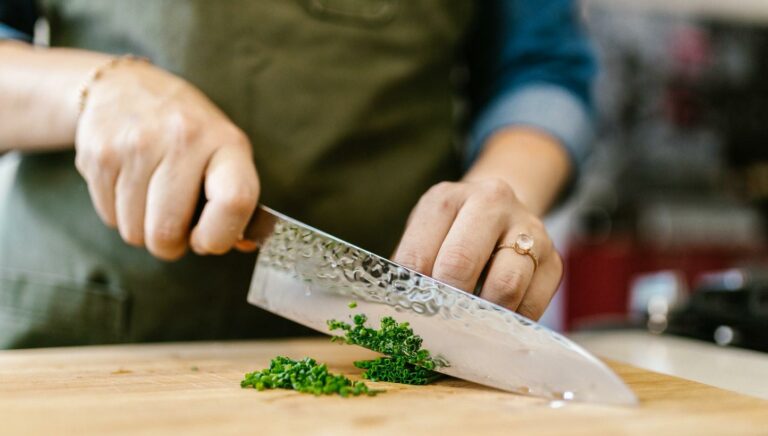
The versatility of a good chef’s knife makes it the go-to knife in the kitchen, but some tasks require more specialized blades. That’s why a fully functional kitchen will always have different types of kitchen knives in its collection.
The convenience of using the right knife for every cutting task can help improve your confidence when prepping food. Every cut will feel seamless, and you’ll end up with the exact chops, slices, or dices you want.
Here are the main types of knives you need in your kitchen and their uses.
Types of Kitchen Knives
Advances in craftsmanship and specialization have created several different kinds of kitchen knives. However, the focus of this article is the most commonly used knives in a home cook’s kitchen. The first four can be considered essential pieces, and the rest nice-to-haves.
Chef’s Knife

Pictured: WÜSTHOF Classic 8 Inch Chef’s Knife
As mentioned before, the reliability of the chef’s knife makes it one of the most used blades in the kitchen. Also known as the cook’s knife, this piece features a broad blade and a comfortable handle. It measures between 6 and 12 inches from the tip to the end of the handle.
The best chef’s knives are forged with full tang construction to promote balance and control. They are, therefore, comfortable to handle and use in virtually all cutting tasks in the kitchen. A good sharpening stone can help keep your knife in shape.
Utility Knife
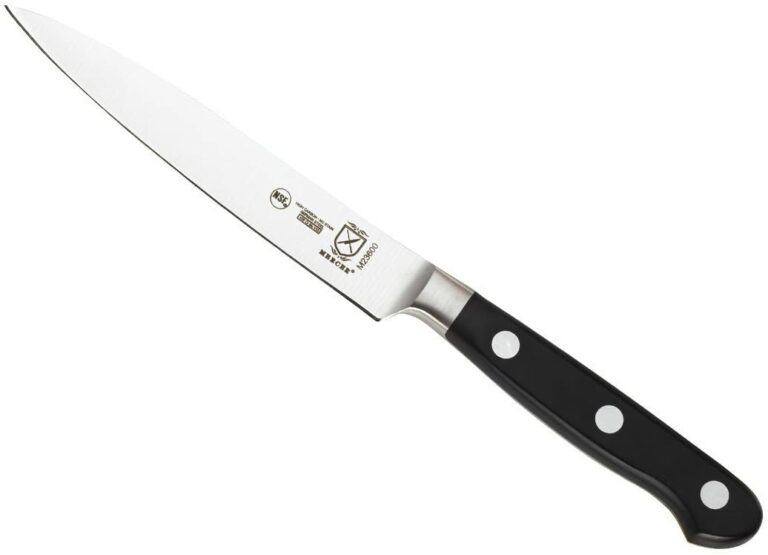
Pictured: Mercer Cutlery Renaissance, 5-Inch Utility Knife
A cook’s knife is not the best at precision cutting – where you need thinner or smaller blades. That is where the utility knife comes in. Its small size in the 4-to-7-inch range makes it the best for cutting, slicing, or trimming small foods.
Santoku Knife

Pictured: Wusthof 1040131317 Classic Santoku Knife
The Santoku knife is an excellent alternative to the chef’s knife if you prefer something smaller yet reliable. Like most Japanese knives, the Santoku knife is smaller and thinner than the standard chef’s knife from the West.
The name of the Santoku knife describes its three virtues: dicing, slicing, and mincing. Its dependability means you can use it to do most of the cutting tasks in the kitchen.
Some manufacturers add groves along the edge of the Santoku knife to prevent food from sticking on the blade when slicing.
Kitchen Shears
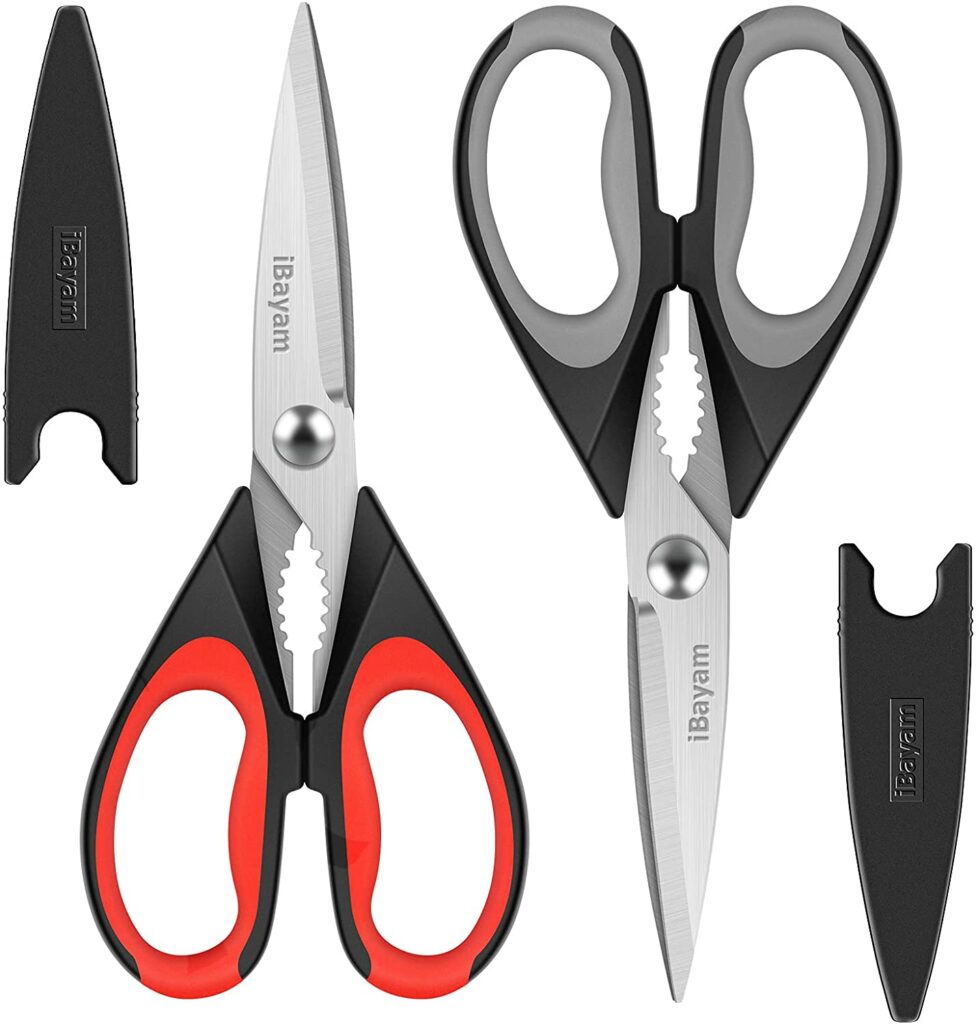
Pictured: iBayam All Purpose Stainless Steel Utility Scissors
Kitchen shears are more like scissors but with features to enhance their functionality and versatility. While they don’t fully fit in the knives category, they feature on this list since they can perform most cutting in the kitchen.
The thick blades on kitchen shears allow them to handle tougher cuttings like sectioning chicken, but they can also do simple cutting tasks such as snipping herbs and slicing pizza. Some shears can also open cans, bottles, and peel fruits.
Boning Knife

Pictured: HENCKELS Forged Premio Boning Knife 5.5-inch
From the name, a boning knife comes in handy when separating meat from bones and, sometimes, filleting fish. The small size of most boning blades also makes them ideal for handling such tasks as peeling fruits.
Boning knives have lengths varying from 3 to 8 inches, and their blades can be stiff, semi-flex, or flex. Many home cooks use boning knives for precision slicing and trimming due to their small size and thin blades.
Cleaver Knife

Pictured: Meat Cleaver 7 inch Vegetable and Butcher Knife
The most distinguishable feature of cleaver knives is their extra-wide blade. They are sharp and heavy, perfect for their primary purpose – breaking down large chunks of meat. The blades are usually stiff and made from sturdy, durable materials like stainless steel.
Cleaver knives have full tang construction with comfortable handles to enhance handling and control over their maneuverability. They are also used to cut vegetables.
Bread Knife

Pictured: Cuisinart C77TR-8BD Triple Rivet Collection 8″ Bread Knife
The serrated blade on a bread knife allows you to cut through bread, cake, and other baked foods without squashing them. They are usually long, between 7 to 10 inches, for convenience when cutting through food.
Steak Knife
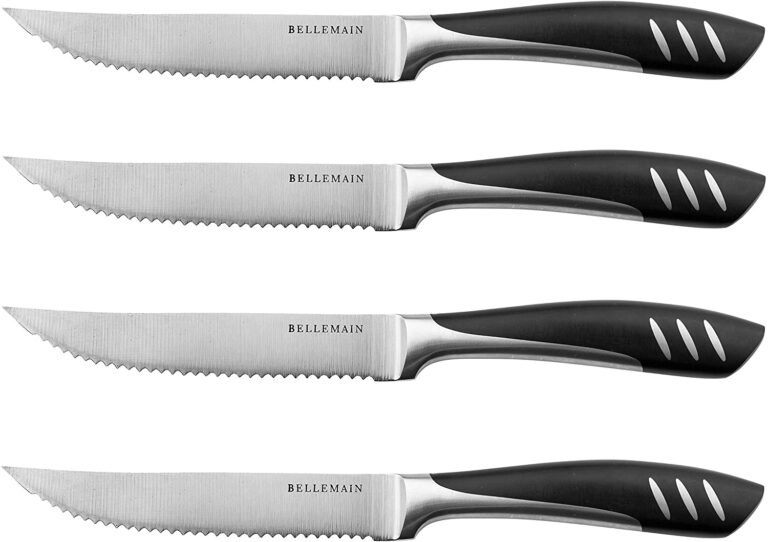
Pictured: Bellemain Premium Steak Knife
Unlike most other knives on this list, the steak knife is used at the table. It’s usually small with serrations along the belly of the blade. They are sharp enough to help cut smaller, swallowable pieces of steak, fish, and chicken.
Paring Knife

Pictured: Wusthof Classic Paring Knife
The 3-to-4-inch blade on a paring knife allows precision when peeling fruits, trimming vegetables, or excess fat. It is also used for making garnishes for drinks and food. Paring knives come with different types of blade tips, including sheep’s foot, spear point, and bird’s beak.
Nakiri Bocho
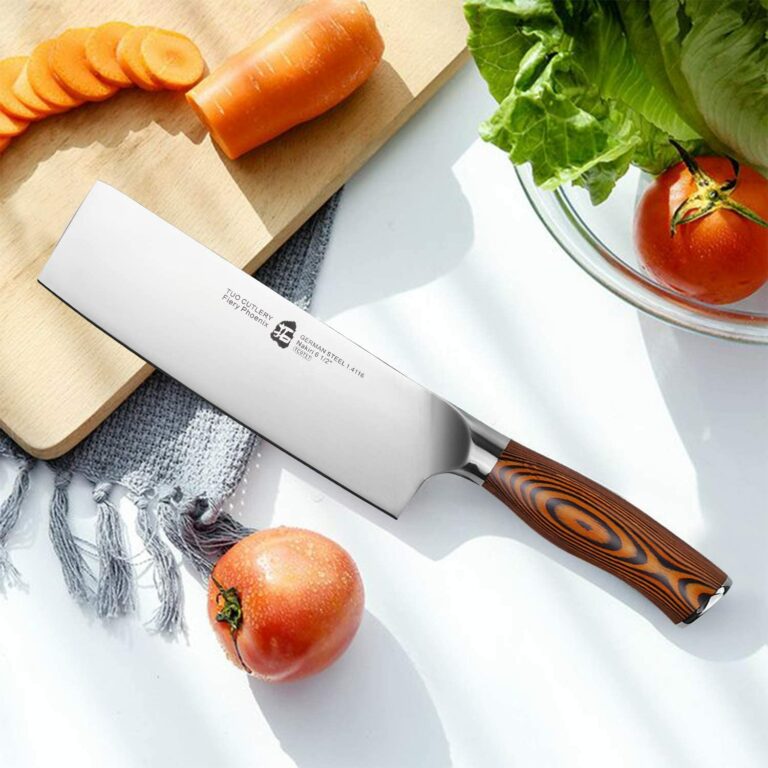
Pictured: TUO Nakiri Knife
The Nakiri bocho has a wide rectangular blade and is commonly used for cutting vegetables. The knife’s Japanese construction promotes precision when slicing or chopping food. Another feature of most Nakiri knives is the hollows along the blade’s edge. These prevent food from sticking on the blade.









